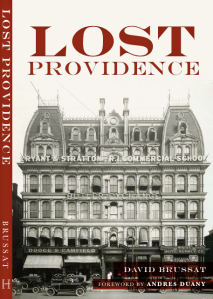This blog, bloviating before its vacation, wondered whether anyone could tell what is underneath the electronic billboards of Times Square. Close examination suggests that few if any buildings there warrant exposure from billboard removal. The clear fact is that the billboards don’t cover them up enough. Not nearly enough. The one building in Times Square with no billboards is the beauty at the center of the photo above.
The Paramount Building, designed by Rapp & Rapp and completed in 1927, features tan masonry forming a shaft above a four-story base of lighter stone whose arched entry portal rises almost the full four stories of the base. The building steps back in deference to the 1916 law mandating setbacks to let more of the sun’s rays get to the street, and is topped by a massive clock tower surmounted by a globe.
One can only imagine if these buildings could speak what they might say to each other. The Paramount might be accused by its younger neighbors of pride – by not covering itself up with billboards. The Paramount might reply that the billboards fail to obscure the naked embarrassment of their wearers. They may treasure their commercial togs, but they are no more effective than poorly daubed makeup on a woman. Indeed, the Paramount might treasure its neighbors’ billboards even more than they do.
No, we would not have them removed, and it is unlikely that under the new federal highway law they will be removed.




Excellent point! Methinks you should take it up with the NYHRC – the New York Human Rights Commission. I must plead guilty to not having thought of the buildings’ users at all. It is possible that the billboards are visually permeable from behind, I don’t know. But you raise a good point.
By the way, Rick, I spent about two thirds of my time at the Journal in a large office that had no windows but a huge photograph of Providence. I did not miss the window all that much, though I was pleased to get one, looking out at the Convention Center, about 10 years ago. But my office was no longer large enough to host a soccer game. (But yes, I did like it more.)
LikeLike
David, while I’m sure I would bow to your wisdom that the buildings beneath the billboards are, at best, undistinguished, there is one aspect I think you leave out: the poor residents within. I seem to recall that one of your offices on Fountain Street had windows, and what a shame if you didn’t have some natural light. I can just imagine all the people in the offices behind those walls who not only don’t have natural light, but no view of the teeming world below them. I guess you have to believe that buildings aren’t just for the people outside looking in, but also for the people inside looking out.
Rick
LikeLiked by 1 person